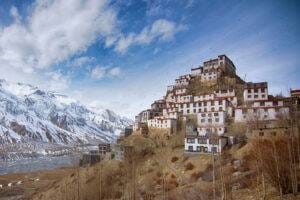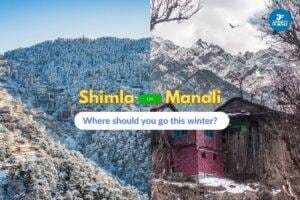Planning a winter tour to Spiti Valley is an adventure in itself. This enchanting destination, with its snow-clad mountains and tranquil landscapes, offers a magical experience for travellers seeking to escape the ordinary. Whether you’re looking for winter Spiti tour packages or planning a DIY trip, this guide will help you prepare for an unforgettable journey.
Where Is Spiti Valley?
Spiti Valley is located in the Lahaul-Spiti district of Himachal Pradesh, at an altitude of over 12,500 feet. Known as the “Middle Land,” it serves as a cultural and geographical bridge between India and Tibet.
Here’s what makes Spiti Valley unique:
- Pristine Landscapes: From frozen rivers to snow-covered villages, every corner feels like a winter postcard.
- Ancient Monasteries: Visit Key Monastery and Tabo Monastery, which are centuries-old marvels of architecture.
- Offbeat Villages: Explore places like Hikkim, home to the world’s highest post office, and Langza, known for its fossils.
Spiti Valley transforms into a serene, less-travelled paradise during winter, making it ideal for adventure seekers.
How to Reach Spiti Valley in Winter
Traveling to Spiti Valley in winter requires careful planning as certain routes close due to heavy snowfall. Here’s how you can reach Spiti:
By Road
The road via Shimla is the only option to reach Spiti Valley in winter, as the Manali route (via Rohtang Pass and Kunzum Pass) remains closed.
- Route: Chandigarh → Shimla → Narkanda → Kalpa → Tabo → Kaza
- Distance: Approximately 500 km from Chandigarh
Advantages:
- The route remains operational in winter with manageable road conditions.
- You can stop at scenic locations like Narkanda and Kalpa.
Pro Tip: Ensure your vehicle is equipped for snow driving or hire an experienced driver.
By Public Transport
- Bus: HRTC buses operate between Shimla and ReckongPeo, from where you can hire a shared taxi or bus to Kaza.
- Cost: Budget-friendly but expect longer travel times.
By Air
- Nearest Airport: Bhuntar (Kullu)
- From Bhuntar, you’ll need to travel by road to Spiti, which can be challenging due to unpredictable weather.
| Mode | Time | Cost | Suitability |
| Private Vehicle | 12–15 hours | Moderate | Best for group travel and flexibility |
| Bus | 16+ hours | Budget-friendly | Suitable for solo travelers |
| Air + Road | 1-hour flight + 12 hours drive | Expensive | Suitable for those short on time but not ideal in winter |
What to Keep in Mind for Your Winter Spiti Tour
Planning a winter Spiti tour requires preparation to ensure a smooth experience. Here’s what you should focus on:
- Clothing: Pack multiple layers, including thermals, jackets, gloves, and woolen caps.
- Health: Carry basic medication for altitude sickness as Spiti’s high elevation can cause discomfort.
- Accommodation: Book hotels in advance, as many homestays may close during winter.
- Tour Packages: Opting for winter Spiti tour packages can save you the hassle of arranging transport, accommodation, and guides.
Why Opt for Winter Spiti Tour Packages?
Booking a winter Spiti tour package offers several advantages:
- Hassle-Free Travel: Your itinerary, accommodation, and transportation are managed for you.
- Local Expertise: Experienced guides ensure safety and enhance your experience with their knowledge.
- Cost-Effective: Packages often provide value for money by bundling services.
A winter tour to Spiti Valley is a surreal experience that promises adventure, peace, and unforgettable memories. Whether you plan the trip on your own or choose a winter Spiti tour package, preparation is the key to enjoying the journey.
So, pack your bags, embrace the chill, and get ready to explore one of India’s most stunning winter destinations!





